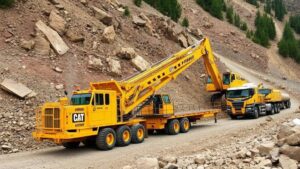Using Hidden Stream Flows to Predict Natural Pay Zones for Gold
Using Hidden Stream Flows to Predict Natural Pay Zones for Gold
The search for gold, one of the most sought-after precious metals, has often led exploration efforts into challenging terrains where traditional methods might fail to yield results. But, emerging research shows that analyzing the hidden flows of streams can significantly enhance the identification of natural pay zones for gold deposits. This article delves into the methodologies, case studies, and implications of using hidden stream flows in gold exploration.
The Concept of Natural Pay Zones
Natural pay zones refer to the areas where gold deposits accumulate, making them economically viable for mining. Identifying these zones is crucial since they dictate the potential profitability of a mining operation. Historically, miners relied on surface indicators, such as mineralization and geologic formations, but these methods have limitations.
Understanding Hidden Stream Flows
Hidden stream flows, often referred to as subsurface or hyporheic flows, are the underground water movements that can transport sediments and minerals, including gold. These streams play a pivotal role in the geomorphology of river systems by influencing sediment deposition patterns. When water flows through these subsurface layers, it can create environments conducive to gold accumulation, especially in areas of low flow velocity.
Methodologies for Utilizing Hidden Stream Flows
To effectively predict natural pay zones using hidden stream flows, a combination of hydrological and geochemical methods must be applied:
- Hydrogeological Mapping: This involves creating maps that detail the movement of groundwater and surface water in relation to known geological structures.
- Geochemical Sampling: Collecting and analyzing sediment samples from potential stream sources to detect trace elements that typically accompany gold.
- Remote Sensing Techniques: Utilizing satellite imagery and aerial surveys to analyze landforms and vegetation patterns that indicate subsurface water movement.
Case Studies and Real-World Applications
Several notable case studies illustrate the success of integrating hidden stream flow analysis in gold exploration. One compelling example is the initiative undertaken in the Klondike region of Canada. Here, researchers employed hydrological modeling to map the subsurface flows and targeted specific areas for detailed sampling.
Another significant instance is found in the Sierra Nevada region, where geochemists discovered a correlation between stream flow patterns and gold presence in streambed sediments. This correlation enabled geologists to not only pinpoint existing gold deposits but also uncover previously overlooked natural pay zones.
Challenges and Considerations
While the integration of hidden stream flows in gold exploration presents exciting possibilities, certain challenges must be acknowledged:
- Data Availability: Accessing comprehensive hydrogeological data can be difficult, particularly in remote areas.
- Complexity of Subsurface Flows: The unpredictability of subsurface water movement can complicate predictions of gold accumulation.
- Environmental Concerns: Exploration activities must consider the potential environmental impact to avoid damaging ecosystems.
Actionable Takeaways
For mining companies and geologists looking to optimize their exploration strategies, several steps can be taken:
- Invest in hydrogeological studies to develop accurate models of subsurface water flow.
- Incorporate geochemical analysis into exploration programs to identify potential gold-bearing sediments.
- Use modern technologies, such as Geographic Information Systems (GIS), to analyze data efficiently.
To wrap up, applying the analysis of hidden stream flows holds great promise for more effective identification of natural pay zones for gold. By integrating advanced methodologies and addressing the accompanying challenges, explorers can enhance their prospects in the rich and complex field of gold mining.



